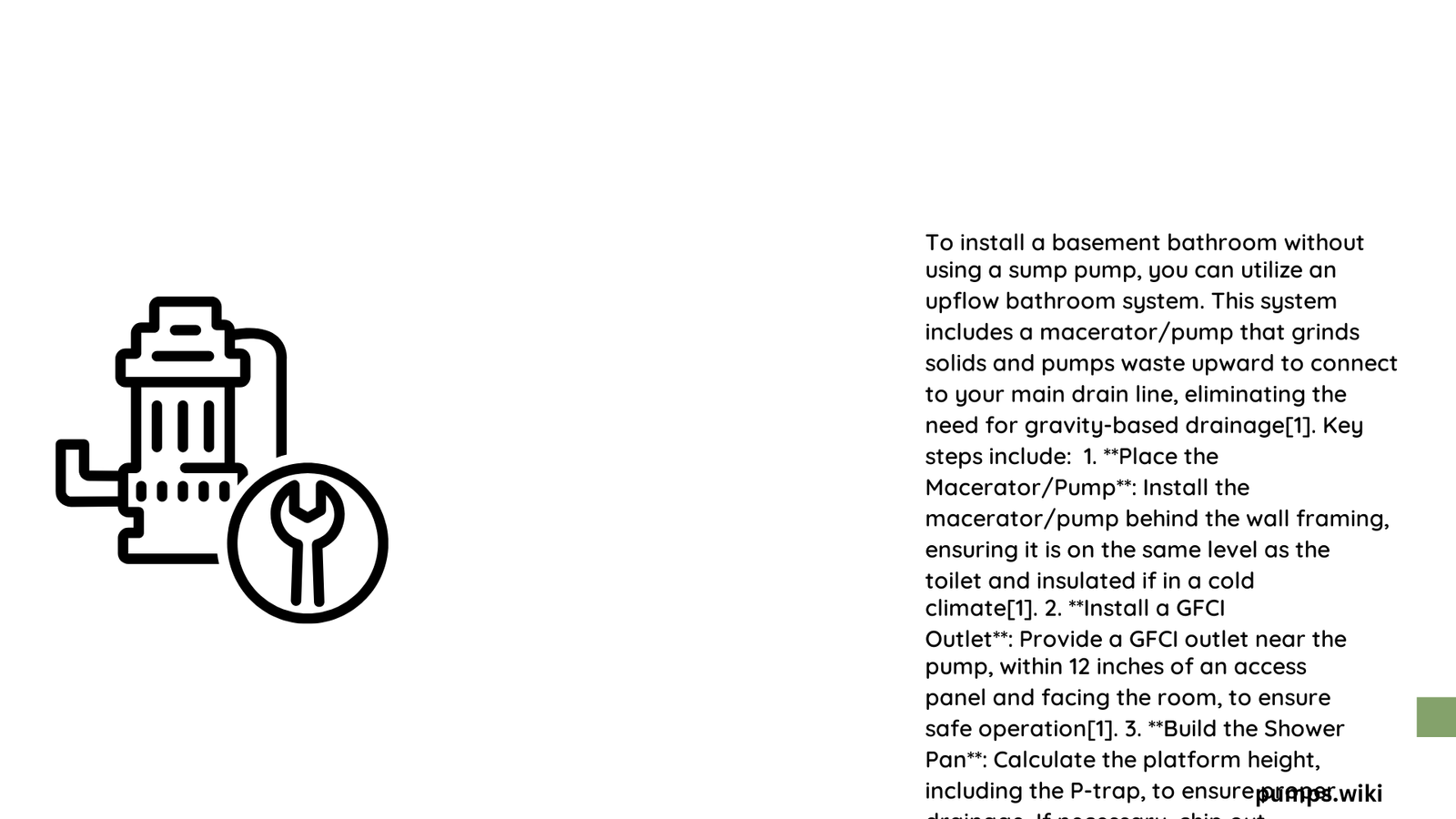Installing a basement bathroom without traditional sump pump drainage requires innovative plumbing strategies that leverage gravity, specialized toilet systems, and advanced drainage technologies. Homeowners can successfully create functional below-grade bathrooms by understanding alternative drainage methods, implementing precise installation techniques, and addressing potential water management challenges through strategic design and equipment selection.
What Are Gravity Drainage Strategies for Basement Bathrooms?
Gravity drainage represents the most fundamental approach to managing basement bathroom plumbing without relying on a traditional sump pump. This method depends on strategic fixture placement and precise slope calculations to ensure efficient waste removal.
Key Gravity Drainage Considerations
| Drainage Element | Recommended Specification |
|---|---|
| Pipe Slope | Minimum ¼ inch per foot |
| Minimum Pipe Diameter | 3 inches for single toilet |
| Recommended Pipe Material | ABS or PVC |
Upflushing Toilet Technologies
Upflushing toilets provide an exceptional solution for basement bathrooms with challenging drainage configurations. These specialized fixtures offer several advantages:
- Grinding Mechanism: Breaks down waste into fine particles
- Flexible Installation: Can operate below main sewer line
- Compact Design: Requires minimal structural modifications
- Cost-Effective: Less invasive than traditional plumbing approaches
How Can Homeowners Manage Wastewater Without Traditional Pumps?

Ejector Pump Alternatives
Ejector pumps represent a robust alternative to standard sump pumps, specifically designed for basement bathroom waste management. These systems feature:
- Built-in grinding mechanisms
- Ability to move wastewater uphill
- Separate ventilation requirements
- Compatibility with multiple fixtures
Macerating Toilet Systems
Macerating toilets offer comprehensive drainage solutions by:
– Grinding solid waste into fine particles
– Pumping waste through small-diameter pipes
– Connecting multiple fixtures (sink, shower, toilet)
– Operating independently from main drainage infrastructure
What Waterproofing Strategies Complement Basement Bath Installations?
Essential Waterproofing Techniques
Successful basement bathroom installations require comprehensive waterproofing strategies:
- Membrane Applications:
- Epoxy-based coatings
- Polyurethane membranes
-
Bituminous waterproofing solutions
-
Exterior Drainage Improvements:
- Proper ground grading
- Functional gutter systems
- Downspout extensions
What Are Potential Installation Costs?
Estimated Budget Breakdown
| Component | Estimated Cost Range |
|---|---|
| Upflushing Toilet | $1,000 – $3,000 |
| Pipes and Fittings | $500 – $1,500 |
| Waterproofing Materials | $500 – $2,000 |
| Plumbing Labor | $2,000 – $5,000 |
Conclusion
Basement bathrooms without traditional sump pumps are achievable through strategic planning, specialized equipment, and precise installation techniques. Homeowners should consult professional plumbers to design a system tailored to their specific structural constraints.
